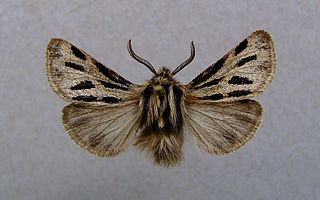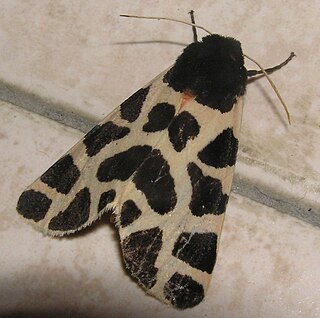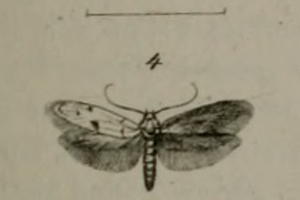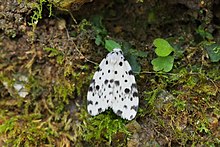
Pyraustinae is a large subfamily of the lepidopteran family Crambidae, the crambid snout moths. It currently includes over 1,400 species, the majority of them tropical but some found in temperate regions including both North America and Europe.
Carl Anton von Meyer was a German, Russified botanist and explorer.

Julius Lederer was an Austrian entomologist who specialised in Lepidoptera. He travelled widely: to Andalusia in 1849 Carinthia with Johann von Hornig (1819–1886) in 1853, İzmir in 1864, Magnesia in 1865, Amasya and Turkey in 1866, Mersin and the Taurus Mountains in 1867, Lebanon in 1868 and the Balkans in 1870).

Aemene is a genus of moths in the family Erebidae first described by Francis Walker in 1854. They are found in Japan, throughout India and Sri Lanka.

Ocnogyna is a genus of moths in the family Erebidae from western Eurasia. The genus was erected by Julius Lederer in 1853. One aberrant species, Ocnogyna parasita, has females with non-functional wings, and because of this was formerly placed in its own genus Somatrichia, but is now in Ocnogyna.
Parasiccia is a genus of moths in the subfamily Arctiinae.

Cymbalomia is a genus of moths of the family Crambidae.

Polia is a genus of moths of the family Noctuidae described by Ochsenheimer in 1816.

Tathorhynchus is a monotypic moth genus in the family Erebidae erected by George Hampson in 1894. Its only species, Tathorhynchus exsiccata, the Levant blackneck or double-spotted snout, was first described by Julius Lederer in 1855. The nominate form is found on the Canary Islands and in North Africa, tropical Asia and tropical Africa. It has been introduced in Dominica and Argentina. Subspecies Tathorhynchus exsiccata fallax is found in the northern half of Australia, as well as Norfolk Island and New Zealand.

Cymbalophora oertzeni is a moth of the family Erebidae first described by Julius Lederer in 1855. It is found in Israel and Palestine.

Dipchasphecia is a genus of moths in the family Sesiidae.

Ancylosis is a genus of snout moth. It was described by Philipp Christoph Zeller in 1839, and is known from South Africa, Uzbekistan, Spain, Turkmenistan, Lebanon, Algeria, Tunisia, Russia, Israel, Palestine, Tinos, Australia, Seychelles, Afghanistan, the United States, Iraq, Namibia, Kazakhstan, Iran, Mauritius, Mozambique, Sarepta, Argentina, Sri Lanka, and Aden.
Ocnogyna bellieri is a moth of the family Erebidae. It was described by Julius Lederer in 1855. It is found in Turkey.
Aemene maculata is a moth of the family Erebidae. It was described by Gustave Arthur Poujade in 1886. It is found in western China and Taiwan.

Enolmis desidella is a moth of the family Scythrididae. It was described by Julius Lederer in 1855. It is found in Saudi Arabia, Syria, Lebanon, Turkey, Libya, Mauritania, Crete, Cyprus and Croatia, Slovenia, Serbia, Bosnia and Herzegovina, North Macedonia and Greece.

Limenitis helmanni is a butterfly found in the East Palearctic that belongs to the browns family.










